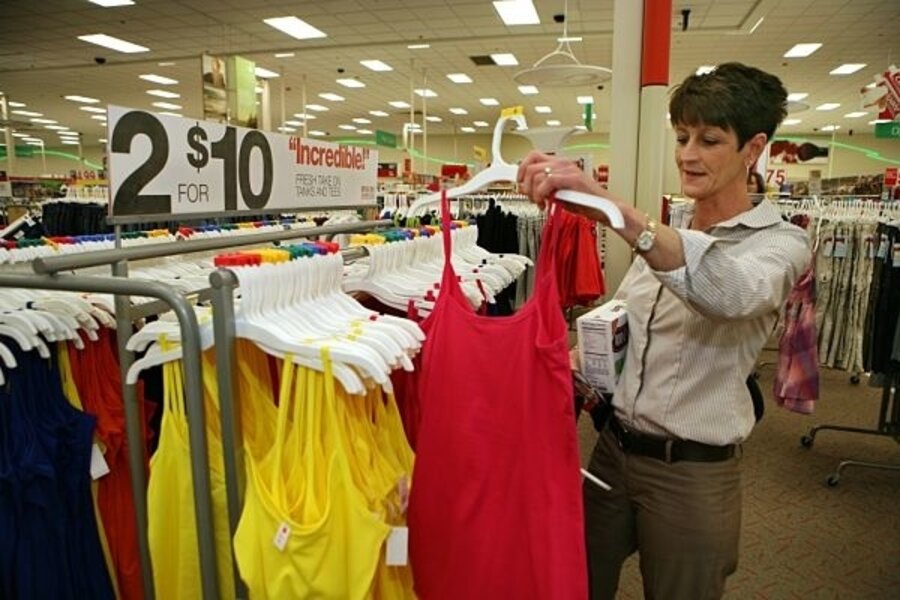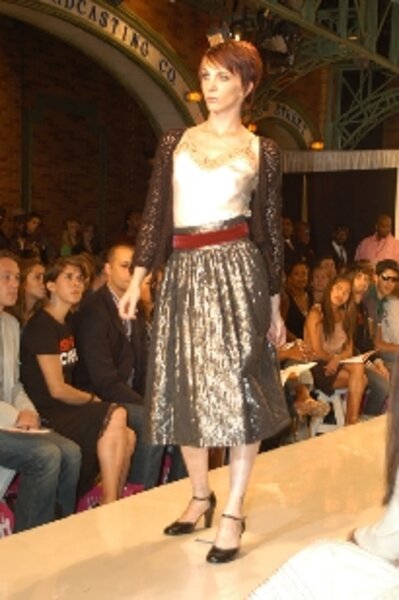Rise of the Recessionistas
“Recessionista”? “Frugalista”? Call them what you may, today’s fashionistas are on the road to their own recovery.
Whether it’s the wealthy New York matron who eschews a shopping spree in favor of a single, high-quality item or the struggling Los Angeles actress who selects a single pair of shoes at a discount megastore, today’s fashion-conscious are finding a new kind of freedom. The languishing economy may have forced an unwanted downsizing on both budgets and desires, but out of that has blossomed something else – a newfound self-confidence in personal fashion decisions, choices no longer dominated by snobbery or designer “cool.” Among the emerging signs: the first lady bedecked in off-the-rack, J. Crew casual wear and the growing number of top designers – think Norma Kamali and Vera Wang – retooling for the discount crowd at Wal-Mart and Kohl’s.
“Women today are feeling empowered,” says couture designer Joanna Mastroianni. “Some of my top clients who could afford anything are looking for value now, quality over quantity.”
It’s a cultural sea change, says futurist Marian Salzman. “History will record this as a shift from mindless consumerism to a new frugality…. Money is being vaporized, many lives are changed forever. It’s not just the latest trend. It’s much deeper than that.”
Expensive shoes used to break the bank for Los Angeles actress Lara Ingraham, who says she rarely has money to spare. “I put it all into my career,” she says, whether it’s classes or clothing.
But she confesses to spending too much time and money at pricey places such as Barneys or Bergdorf Goodman. “I used to buy way too much, way beyond what I needed or used,” she adds.
She began her own road to fashion rehabilitation with a color consultant. Once the economy began to slide, she says, she realized more than ever the need to be confident in her own fashion decisions. “I couldn’t really afford to do anything else,” she adds with a laugh.
Armed with a guide to the colors that suit her best, Ms. Ingraham says she now is ruthlessly pragmatic. “I’m in and out, I only get what I need and that’s it.”
The global fashion industry generates roughly $900 billion in sales a year, nearly half of that in the United States. As business declines – Barneys is reportedly trying to close two of its seven stores – fashion outlets from Munich to Minneapolis are scrambling to catch the jaded eye and precious cash of this increasingly fickle and independent shopper.
To create “buzz,” the three-year-old German design house Clemens en August bypasses the routine brick-and-mortar address. Instead, it runs an international, invitation-only circuit of temporary shops that set up for a long weekend at, say, an art gallery in London, sell pricey designer duds at a steep discount, then move on. At another end of the spectrum, Minnesota-based Target, which helped bring designers to discount retailers when it hired Isaac Mizrahi in 2003, regularly offers new designer fashions for limited runs, often a few weeks at a clip.
The luxury sector, which makes up roughly 5 percent of the overall apparel market, is in for “rough sailing” through the end of this year, says retail expert Scott Testa.
The numbers tell the story, says Mr. Testa, professor of marketing at St. Joseph’s University in Philadelphia. He points to the March 2008 to March 2009 sales figures, which show a 30 percent decline for Neiman Marcus and a 23 percent decline for Saks Fifth Avenue. During the same period, Target declined 6.3 percent and Kohl’s slumped only 4.3 percent. “Given these numbers, it’s clear that shoppers are more willing to spend in a low-cost environment,” he says. “Many top designers are rethinking new ways to put their brand in front of those shoppers.”
As retailers struggle to adapt, companies that help nurture the spirit of fashion independence have done well.
“The genie is out of the bottle,” says Kevin Johnson, CEO of the 10-year-old online shopping portal ebates, which rewards its 8 million members with cash rebates on purchases. Tough times have “been good for us, because people get used to getting good deals and even when the good times return, they won’t go back to paying full price,” Mr. Johnson says.
His site features bloggers with advice and guides to reproducing high-end looks on a shoestring budget. While everyone likes a deal, he adds, “nobody wants to look like they shopped at a bargain basement.”
Color expert Jill Kirsh teaches fashion independence through her guide, which helps people decide what looks good on them, shade by shade, hue by hue. “People flail around, buy too many clothes they never wear, and generally feel confused and helpless about what to buy,” she says, “but it doesn’t have to be that way.” All it takes is the willingness to learn. While her private sessions can be pricey, she has dedicated the free tools on her website (jillkirshcolor.com) to getting out the message that fashion freedom is possible.
Sometimes all it takes is a healthy “aha!” moment, such as the one Ms. Salzman had recently. A self-confessed former Barneys and Bloomingdales regular, she says she was visiting a wealthy friend “who makes 50 times what I do,” she recalls with a hearty laugh. The woman had a “really stylish” pair of shoes. Salzman asked about them, figuring she’d get an inside tip on a hot new designer. Instead, her friend said, “Payless,” the low-cost shoe store. “That was it,” she says. “If I can look like that for pennies, why on earth would I go back to shopping at Barneys?”
Some suggest recession-chic, which makes budget shopping acceptable even in the toniest circles, will go out of style just like any other trend. “People like fashion, and they won’t stop following the trendsetters just because they can get it for cheap,” says Lien Ta, managing editor of Hollywood.com.
Nonetheless, she says, it is striking just how much fashion rules have evolved. Just a few weeks ago, she says, she went to a launch party at Hollywood’s hip Chateau Marmont, with celebs like Sting and Anna Paquin. But this was not for the latest film or even celeb perfume. It was for the latest collection from designer Charlotte Ronson, soon to be appearing on the counters at J.C. Penney.
“Not too long ago,” she adds, “that would have been unthinkable.”






